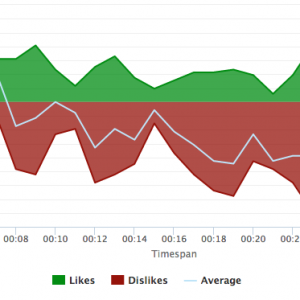Understanding Market Research Segmentation for Improved Business Outcomes

Market research segmentation is the process of dividing a target audience into smaller, more specific groups based on certain characteristics. This process helps businesses to better understand and cater to the needs of their customers or clients, ultimately resulting in improved business outcomes. In this article, we will explore the importance of market research segmentation, discover the different types of segmentation strategies, discuss the key steps to implementing segmentation, and explore how to measure its effectiveness.
The Importance of Market Research Segmentation
The importance of market research segmentation cannot be overstated as it is a key tool that businesses can use to gain a deeper understanding of their customers or clients. By segmenting their target audience and understanding the unique needs, preferences, and behaviors of different groups within that audience, businesses can develop better products, services, and marketing strategies to meet their needs.
Identifying Target Audiences
The first step in utilizing market research segmentation is identifying the target audience. This involves asking key questions such as, who are our customers? What are their needs and preferences? What motivates them to buy our products or services?
By understanding the target audience, businesses can identify the unique characteristics that make up different groups within that audience. For example, a business selling athletic shoes may find that their target audience consists of runners, basketball players, and tennis players. They can then use these characteristics to segment their audience and develop targeted marketing strategies that appeal to those specific groups, resulting in higher engagement and ultimately, more business success.
Enhancing Marketing Strategies
Market research segmentation also has the ability to enhance a business’s marketing strategies. By utilizing data and research to understand the unique needs and behaviors of different audience groups, businesses can develop tailored messaging and channel strategies that resonate with each group.
For example, a business targeting a group of young adults may find that Instagram and influencer marketing are the most effective channels for reaching that group. Alternatively, a more mature audience may respond better to email marketing or traditional print ads. By developing targeted strategies, businesses can increase the effectiveness of their marketing efforts and ultimately achieve better business outcomes.
In addition, market research segmentation can help businesses to identify new opportunities for growth. By analyzing the characteristics of different audience groups, businesses may discover untapped markets or new product or service offerings that would appeal to those groups.
Increasing Customer Satisfaction and Retention
Finally, market research segmentation plays a crucial role in increasing customer satisfaction and retention. By catering to the unique needs and preferences of different audience groups, businesses can create a personalized and positive customer experience that fosters loyalty and repeat business.
For example, a business that targets working professionals may find that flexibility and convenience are key factors in retaining customers. By offering flexible payment options or extended customer service hours, businesses can increase satisfaction and loyalty in this particular group of customers.
In conclusion, market research segmentation is an essential tool for businesses seeking to gain a deeper understanding of their customers or clients. By identifying target audiences, enhancing marketing strategies, and increasing customer satisfaction and retention, businesses can achieve better business outcomes and ultimately, greater success.
Types of Market Research Segmentation
Market research segmentation is an essential tool for businesses to better understand their target audience and tailor their marketing efforts accordingly. There are several types of market research segmentation that businesses can utilize to gain a deeper understanding of their audience. These include demographic segmentation, geographic segmentation, psychographic segmentation, and behavioral segmentation.
Demographic Segmentation
Demographic segmentation is one of the most commonly used segmentation strategies in market research. This approach involves dividing a target audience based on characteristics such as age, gender, income, education level, and occupation. By understanding the demographic makeup of their audience, businesses can create targeted marketing campaigns that resonate with specific groups of people. For example, a company that sells baby products might use demographic segmentation to target new parents or expectant mothers.
Geographic Segmentation
Geographic segmentation involves dividing a target audience based on location. This segmentation strategy is often used for businesses that operate in a specific region or are interested in targeting a particular location. Factors such as climate, population density, and cultural differences can play a role in this type of segmentation. For example, a company that sells winter sports equipment might use geographic segmentation to target customers in areas with snowy climates.
Psychographic Segmentation
Psychographic segmentation is a more complex segmentation strategy that involves dividing a target audience based on personality traits, values, beliefs, and attitudes. This approach seeks to understand the deeper motivations and desires of a target audience and can be incredibly effective in developing tailored messages and experiences for different segments. For example, a company that sells luxury goods might use psychographic segmentation to target customers who value status and exclusivity.
Behavioral Segmentation
Behavioral segmentation involves dividing a target audience based on their behavior or attitudes toward certain products or services. This segmentation strategy is often used to identify the specific needs or pain points of different groups within the target audience. For example, a company that sells skincare products might use behavioral segmentation to target customers who have sensitive skin or are concerned about aging.
In conclusion, market research segmentation is a critical tool for businesses looking to better understand their target audience and create effective marketing campaigns. By using a combination of demographic, geographic, psychographic, and behavioral segmentation strategies, businesses can gain a deeper understanding of their audience and create targeted messages that resonate with specific groups of people.
Steps to Implement Market Research Segmentation
Implementing market research segmentation involves several key steps that businesses must follow to be successful. By segmenting your target audience, you can better understand their unique needs and preferences, and tailor your marketing efforts to effectively reach and engage them.
Defining Your Objectives
The first step in implementing market research segmentation is defining your objectives. This involves identifying what you hope to achieve through segmentation and how it will align with your overall business goals. For example, you may want to increase sales among a specific demographic, improve customer retention rates, or expand into new markets.
It’s important to have a clear understanding of your objectives before proceeding with segmentation, as this will help guide your data collection and analysis efforts.
Collecting Data
The next step is collecting relevant data from your target audience. This can include primary data, such as surveys or focus groups, as well as secondary data, such as market research reports or online databases.
When collecting data, it’s important to ensure that it is representative of your target audience and that it includes a variety of different factors that can influence purchasing behavior, such as demographics, psychographics, and behavioral data.
Analyzing and Interpreting Data
Once data is collected, the next step is to analyze and interpret it to identify different audience segments. This involves looking for patterns and trends in the data that suggest different groups within the target audience.
For example, you may find that certain demographics have different preferences for product features, or that certain psychographic factors are strongly correlated with purchasing behavior. By identifying these patterns, you can begin to develop targeted segmentation strategies that will resonate with each group.
Developing Segmentation Strategies
Once segments are identified, the next step is to develop targeted segmentation strategies. This involves developing messaging, channel strategies, and experiences that are tailored to the unique characteristics and needs of each specific segment.
For example, you may develop different advertising campaigns for different segments, or create targeted email marketing campaigns that speak directly to the interests and preferences of each group.
It’s important to continually monitor and evaluate your segmentation strategies to ensure that they are effective and that they are helping you achieve your overall business objectives.
By following these key steps, businesses can effectively implement market research segmentation and gain a deeper understanding of their target audience.
Measuring the Effectiveness of Market Research Segmentation
Market research segmentation is a crucial aspect of any successful marketing strategy. It involves dividing a target market into smaller groups based on specific characteristics or behaviors, allowing businesses to tailor their messaging and experiences to each group.
However, simply implementing market research segmentation is not enough. It is essential to measure its effectiveness to achieve better business outcomes. This can be done through a variety of metrics and key performance indicators (KPIs).
Key Performance Indicators (KPIs)
Key Performance Indicators (KPIs) are measurements that businesses use to track and evaluate their progress toward achieving specific goals. For market research segmentation, KPIs can include metrics such as engagement, click-through rates (CTR), and conversions, among others.
Engagement is a critical KPI for market research segmentation. It measures how much your audience is interacting with your content. By tracking engagement, you can determine which segments are most responsive to your messaging and experiences.
CTR is another important KPI for market research segmentation. It measures the number of clicks on a specific call-to-action (CTA) divided by the number of times the CTA was shown. By tracking CTR, you can determine which segments are most likely to take action based on your messaging.
Finally, conversions are an essential KPI for market research segmentation. It measures the number of people who take a specific action, such as making a purchase, after interacting with your messaging. By tracking conversions, you can determine which segments are most likely to convert and adjust your messaging accordingly.
Return on Investment (ROI)
Return on Investment (ROI) measures the effectiveness of market research segmentation in terms of the amount of revenue generated versus the amount of money spent on segmentation efforts. By calculating ROI, businesses can determine whether their segmentation efforts are providing a positive return on investment.
Calculating ROI can be challenging, as it requires businesses to track the revenue generated by each segment and compare it to the cost of implementing the segmentation strategy. However, the insights gained from calculating ROI can help businesses make informed decisions about future segmentation efforts.
Customer Feedback and Surveys
Finally, customer feedback and surveys are a valuable tool for evaluating the effectiveness of market research segmentation. Companies such as Spot Trender use These surveys to provide valuable insights into how different segments respond to messaging and experiences, as well as areas for improvement.
By gathering feedback from customers, businesses can gain a better understanding of how their segmentation efforts are perceived and make adjustments accordingly. Additionally, customer feedback can help businesses identify new segments that they may not have considered previously.
In conclusion, measuring the effectiveness of market research segmentation is crucial to achieving better business outcomes. By tracking KPIs, calculating ROI, and gathering customer feedback, businesses can make informed decisions about their segmentation strategy and adjust their messaging and experiences accordingly.
Conclusion
Market research segmentation is a crucial tool for businesses looking to improve their outcomes by better understanding and targeting their customers or clients. By following the key steps outlined in this article, businesses can successfully implement segmentation strategies and measure their effectiveness through a variety of KPIs and customer feedback tools. By doing so, they will be better positioned to meet the unique needs and preferences of different audience groups and achieve greater business success.








